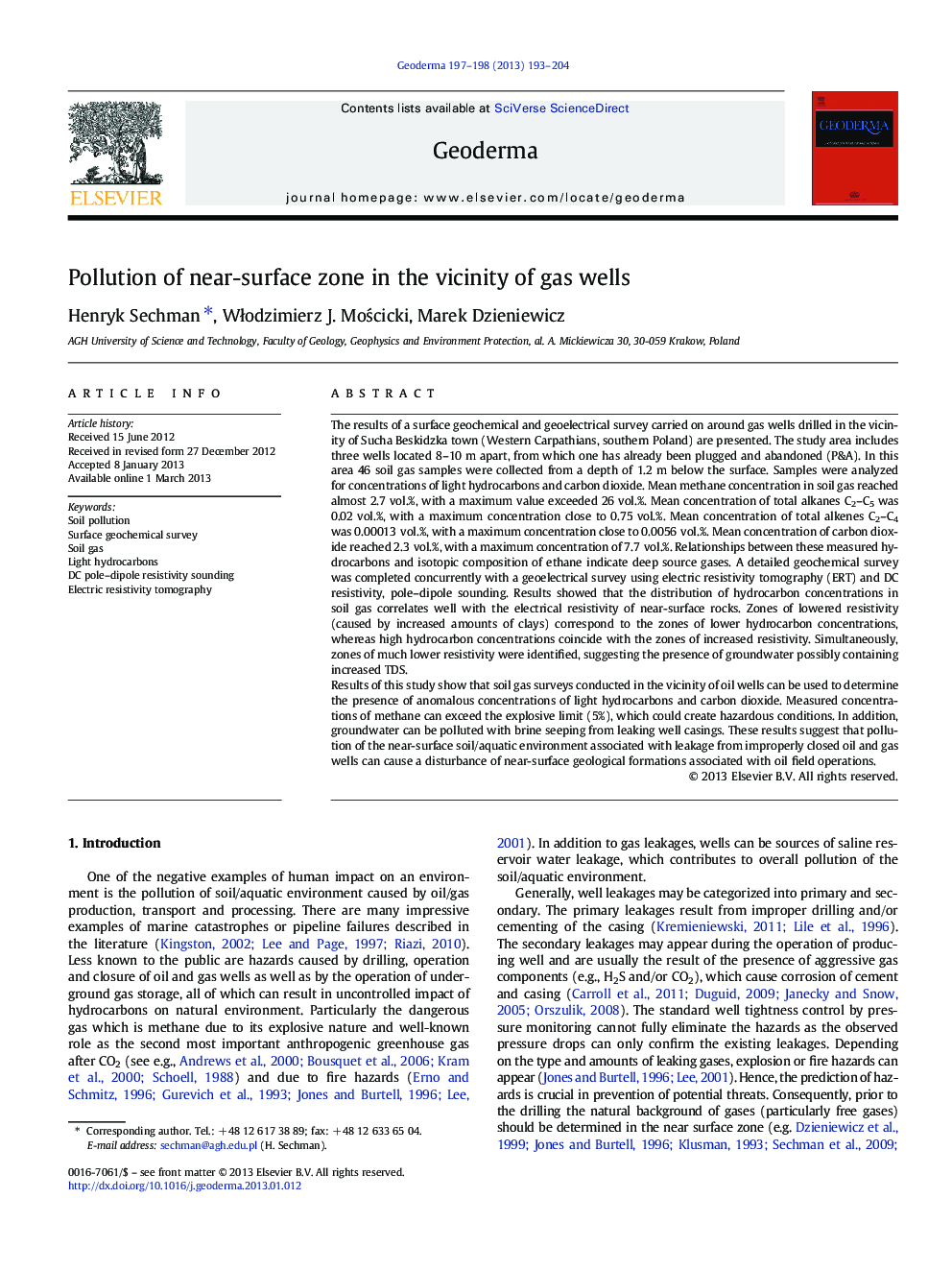| Article ID | Journal | Published Year | Pages | File Type |
|---|---|---|---|---|
| 4573740 | Geoderma | 2013 | 12 Pages |
The results of a surface geochemical and geoelectrical survey carried on around gas wells drilled in the vicinity of Sucha Beskidzka town (Western Carpathians, southern Poland) are presented. The study area includes three wells located 8–10 m apart, from which one has already been plugged and abandoned (P&A). In this area 46 soil gas samples were collected from a depth of 1.2 m below the surface. Samples were analyzed for concentrations of light hydrocarbons and carbon dioxide. Mean methane concentration in soil gas reached almost 2.7 vol.%, with a maximum value exceeded 26 vol.%. Mean concentration of total alkanes C2–C5 was 0.02 vol.%, with a maximum concentration close to 0.75 vol.%. Mean concentration of total alkenes C2–C4 was 0.00013 vol.%, with a maximum concentration close to 0.0056 vol.%. Mean concentration of carbon dioxide reached 2.3 vol.%, with a maximum concentration of 7.7 vol.%. Relationships between these measured hydrocarbons and isotopic composition of ethane indicate deep source gases. A detailed geochemical survey was completed concurrently with a geoelectrical survey using electric resistivity tomography (ERT) and DC resistivity, pole–dipole sounding. Results showed that the distribution of hydrocarbon concentrations in soil gas correlates well with the electrical resistivity of near-surface rocks. Zones of lowered resistivity (caused by increased amounts of clays) correspond to the zones of lower hydrocarbon concentrations, whereas high hydrocarbon concentrations coincide with the zones of increased resistivity. Simultaneously, zones of much lower resistivity were identified, suggesting the presence of groundwater possibly containing increased TDS.Results of this study show that soil gas surveys conducted in the vicinity of oil wells can be used to determine the presence of anomalous concentrations of light hydrocarbons and carbon dioxide. Measured concentrations of methane can exceed the explosive limit (5%), which could create hazardous conditions. In addition, groundwater can be polluted with brine seeping from leaking well casings. These results suggest that pollution of the near-surface soil/aquatic environment associated with leakage from improperly closed oil and gas wells can cause a disturbance of near-surface geological formations associated with oil field operations.
► High pollution with HC, CO2, and brine in the vicinity of oil well was found. ► Measured methane concentrations in explosive range ► Near-surface zone concentrations of HC correlate with rocks electric resistivity
